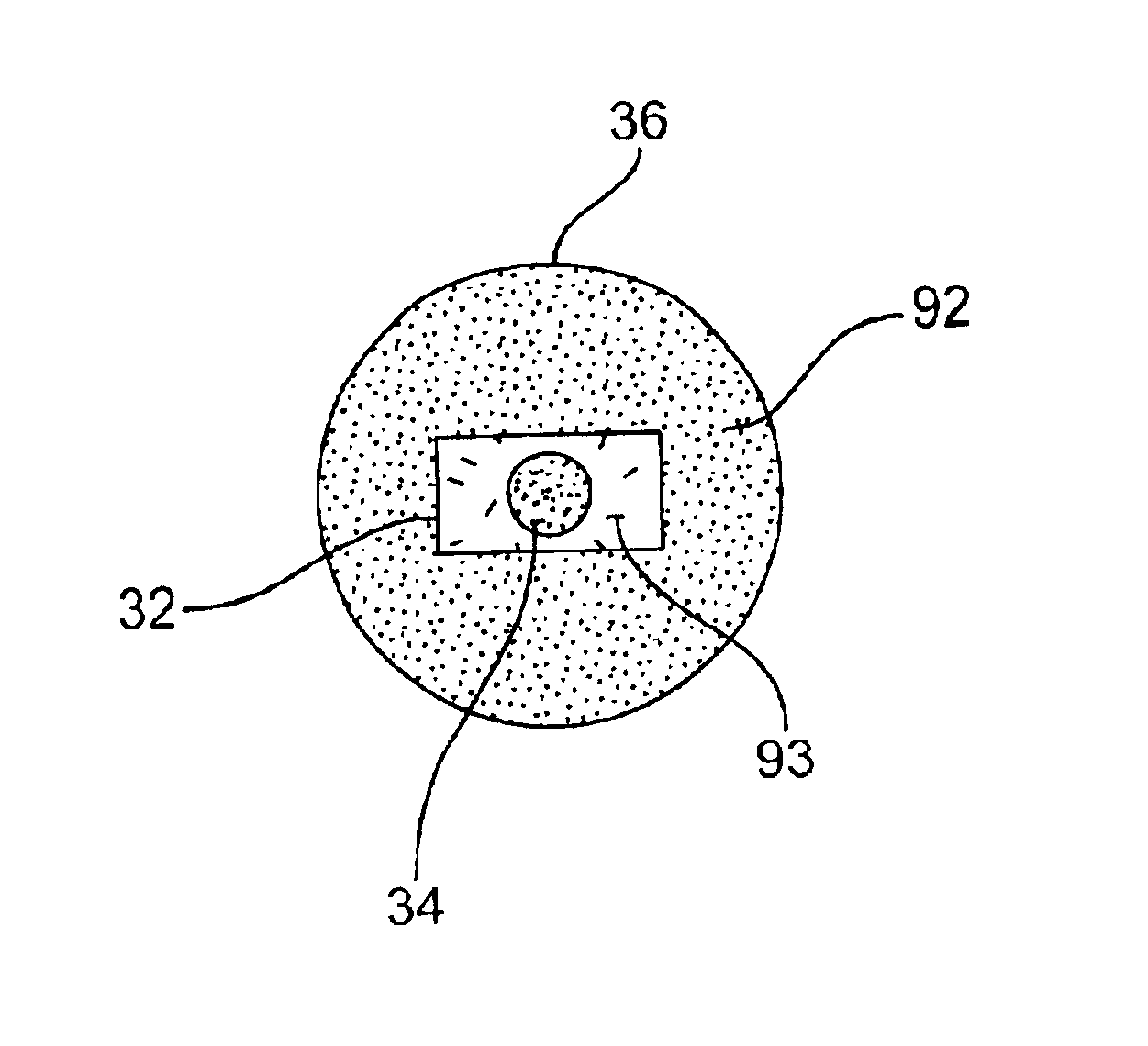A large number of multiplexed signals to be amplified require in aggregate a proportionately large amount of pump power.
Derivative designs such as a
master oscillator power
amplifier (a single-mode stripe followed by a broad stripe amplifier) or flared-
semiconductor devices are capable of producing more than one
watt of optical output power, but many of these designs have been subject to reliability problems (such as back-
facet damage caused by feedback) that have hindered their practical deployment as
fiber amplifier pumps.
While this approach increases the power available for optical amplifiers, it greatly adds to the complexity of the pump source, and requires additional components such as thermoelectric coolers,
fiber gratings, and directional couplers.
As a result, this approach increases cost.
However, the cladding-pumped technique has been determined in practice to be ineffective for pumping pure three-level fiber lasers, such as the 980 nm transition of
ytterbium.
Practical double-clad amplifiers and lasers have been mostly limited to 4-level systems.
To date, a double-clad design by itself (that is, without an additional Raman converter) does not produce a sufficiently high output in any of the appropriate absorption bands for EDFAs.
Such plastic may not have the desired
thermal stability for many applications, may delaminate from the first cladding, and may be susceptible to
moisture damage.
Furthermore, the known large-cladding double clad concept is not efficient with three-level transitions, such as the 978 nm transition of
ytterbium.
Even though the ineffectiveness of conventional cladding-pumped high power 980 nm
fiber laser, which is a three-level
fiber laser, was known, it was not known that it is possible to overcome this ineffectiveness using
special design rules.
However, this disparity in area between the core and cladding cross-sections necessitates a long device length, since the absorption of the pump
radiation is inversely proportional to this ratio (CCR).
Conventionally
high ratio (CCR) of pump cladding area to core area renders achieving a high level of inversion difficult, because in general the higher the ratio (CCR), the lower the level of inversion that can be achieved with a given pump power.
Using rare-earth elements, such as Er, Yb or Nd as the
dopant in the core of the double-clad
fiber amplifier /
laser with high clad to core ratio (CCR) is thus problematic.
Even with the very high power available from a
diode laser bar, it is very difficult to reach the high level of inversion necessary for the operation of a 3-level
system for lasers or amplifiers.
As a result, an unpumped doped core strongly absorbs at the laser
wavelength, and the lasing power threshold can become a problem because of insufficient
population inversion.
Furthermore, sufficient inversion is hard to achieve at about 976 nm because the competing quasi-four-level transition at about 1015-1030 nm for Yb produces the
amplified spontaneous emission (ASE), which saturates the inversion.
The inversion problem stems from the relationship between the gains in the two competing transitions and the pump absorption for Yb.
Thus, in quasi-three-level or three-level cladding-pumped fiber lasers, poor overlap of the pump power
spatial distribution with the doped area results in a much higher
gain of competing four-level laser transitions that require relatively low inversion levels (<5%).
However, the amplifier efficiency was only .about.15%, owing to its circular inner cladding geometry and its small pump absorption.
Although multi-mode coupler technology can still be used for amplifier pumping, it would typically result in a significant
insertion loss.
However, the practical size of the minimum area of the inner cladding will be limited by the choice of materials (NA.sub.clad and the index contrast or index
delta) and the quality of pump focusing
optics.
Furthermore, with conventional
optics it is very difficult to focus a 100 um broad area laser into a spot smaller than 20 um in size, and it is not practical to make a single-mode core larger than 10 um because the required index contrast or index
delta will be too low.
This will degrade the laser or amplifier efficiency, because
optical energy accumulated in the higher-order cladding
modes (ASE) will not be coupled to a single-mode output fiber.
Otherwise, launching any light into the cladding
modes of the amplifier would degrade it's efficiency because some pump energy would be wasted on amplification of the cladding
modes and never converted into a useful output.
In the case of using the active fiber 30 as an amplifier 16 of FIG. 1, however, even a very small amount of
signal reflection can cause undesirable multi-path interference effect.
However, other factors already discussed and to be seen, limit the optimum core size to the one corresponding to a nearly two-moded core.
Given the current material choice and capabilities of
coupling optics, there is a limit to which the cladding size can be decreased before the pump
coupling efficiency will start to suffer.
However, the index difference or
delta between the core and the inner cladding cannot be made too small, or the
optical field will simply not be confined in the core, as already discussed, and the core
waveguide will have too much
bend loss.
Unfortunately, the light emitting spot of a broad-area
semiconductor laser is strongly asymmetric, with an
aspect ratio of at least 100:1.
 Login to View More
Login to View More  Login to View More
Login to View More 


